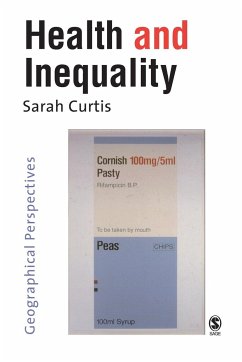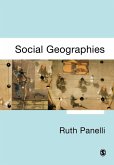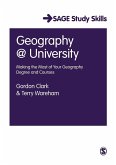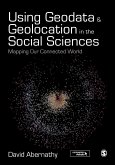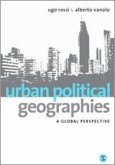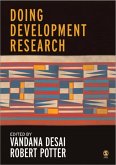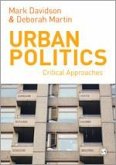`At last! A tour de force on cities and health by someone who knows that geography matters. This is a groundbreaking text, preoccupied as much with health and well-being as with death, disease and despair. It is concerned with who wins and who loses from the social and spatial patterning of risk... Combining breadth of coverage with depth of analysis, Health and Inequality provides an intricate map of harmful spaces and healing places, together with some guidelines on how to get from one to the other' - Professor Susan Smith, Ogilvie Professor of Geography, University of Edinburgh
'Too often as health professionals we remain embedded in nursing and medical literature neglecting the opportunities offered through engaging with other bodies of knowledge. Such an opportunity presents itself in this book which draws on work undertaken by geographers that can help us in our thinking about health inequalities. The strength of this work lies in its aim to ensure that place and space are recognised as significant factors in health inequalities' - Community Practitioner
Health and Inequality presents a comprehensive analysis of how geographical perspectives can be used to understand the problems of health inequalities. The text has three principal themes: to discuss the geography of health inequality and to examine strategies for reducing disadvantage; to review and develop the theoretical basis for a geographical analysis of these problems - the discussion will illustrate how theoretical developments can help in the design and evaluation of intervention; and to explain how different methodologies in the geography of health, both quantitative and qualitative, can be applied in research - demonstrating the complementarity between them. By relating theoretical arguments to specific landscapes, Health and Inequality will be a key resource for understanding the articulation between theory and empirical methods for understanding health variation in urban areas.
'Too often as health professionals we remain embedded in nursing and medical literature neglecting the opportunities offered through engaging with other bodies of knowledge. Such an opportunity presents itself in this book which draws on work undertaken by geographers that can help us in our thinking about health inequalities. The strength of this work lies in its aim to ensure that place and space are recognised as significant factors in health inequalities' - Community Practitioner
Health and Inequality presents a comprehensive analysis of how geographical perspectives can be used to understand the problems of health inequalities. The text has three principal themes: to discuss the geography of health inequality and to examine strategies for reducing disadvantage; to review and develop the theoretical basis for a geographical analysis of these problems - the discussion will illustrate how theoretical developments can help in the design and evaluation of intervention; and to explain how different methodologies in the geography of health, both quantitative and qualitative, can be applied in research - demonstrating the complementarity between them. By relating theoretical arguments to specific landscapes, Health and Inequality will be a key resource for understanding the articulation between theory and empirical methods for understanding health variation in urban areas.
`At last! A tour de force on cities and health by someone who knows that geography matters. This is a groundbreaking text, preoccupied as much with health and well-being as with death, disease and despair. It is concerned with who wins and who loses from the social and spatial patterning of risk... Combining breadth of coverage with depth of analysis, Health and Inequality provides an intricate map of harmful spaces and healing places, together with some guidelines on how to get from one to the other' - Professor Susan Smith, Ogilvie Professor of Geography, University of Edinburgh

